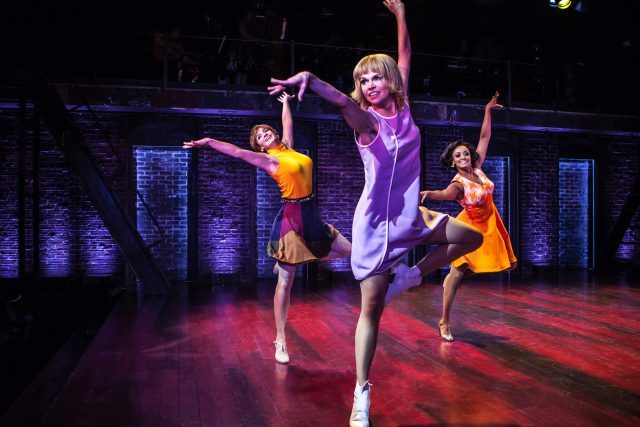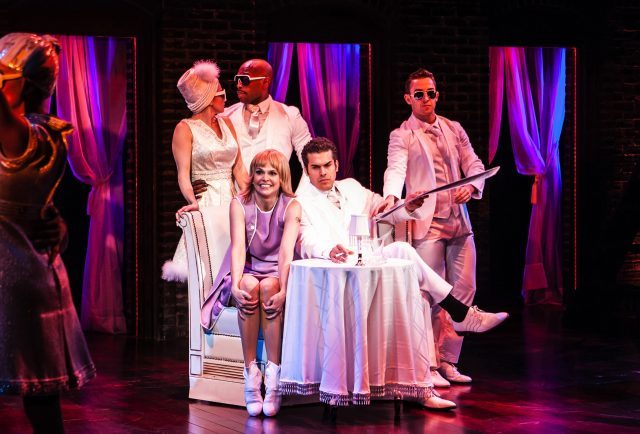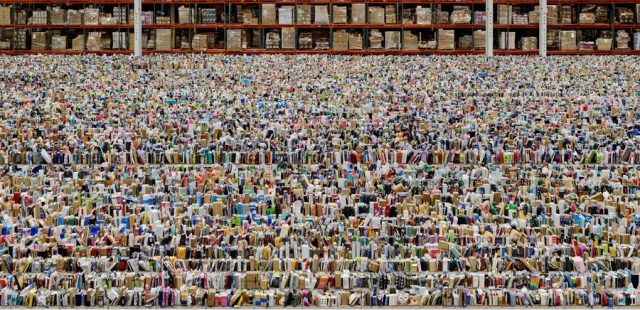
Andreas Gursky, “Amazon,” C-print, 2016 (© Andreas Gursky/Artist Rights Society (ARS), New York/VG Bild-Kunst, Bonn)
Gagosian Gallery
522 West 21st St. between Tenth & Eleventh Aves.
Through Friday, December 23, free, 10:00 am – 6:00 pm
212-741-1717
www.gagosian.com
A pair of stirring, unrelated photography exhibits in Chelsea close this week, both featuring awe-inspiring large-scale prints that turn manufactured landscapes into gargantuan, thought-provoking spectacle. “My photographs are ‘not abstract.’ Ultimately they are always identifiable. Photography in general simply cannot disengage from the object,” German artist Andreas Gursky says about his latest show, “Not Abstract II,” an extension of his recent survey exhibition “nicht abstract” at Kunstsammlung Nordrhein-Westfalen. Continuing at Gagosian’s vast Twenty-First St. space through December 23, the exhibit consists of twenty-one C-prints and inkjet prints accompanied by a specially commissioned subtle soundscape designed by Canadian electronica DJ Richie Hawtin. The majority of the photographs, some stretching more than eleven feet high and more than sixteen feet wide, were taken between 2008 and 2016, highlighted by a trio of recent untitled vertical works that look like Agnes Martin melded with Mark Rothko, C-prints with horizontal lines of bold colors that are impossible to identify as aerial views of tulip fields without additional information. In “Review,” the backs of the heads of current and former German chancellors Gerhard Schröder, Helmut Schmidt, Angela Merkel, and Helmut Kohl are in the foreground, Barnett Newman’s “Vir Heroicus Sublimis” in front of them. “Amazon” takes visitors inside a vast warehouse of endless packages, the scope of the company’s reach instantly evident and overwhelming, while another exploration of consumerism, “Mediamarkt,” gets its own room. “Les Meés” depicts a rolling landscape covered in rows of solar panels. Meanwhile, the shining gold room in “Qatar” practically glows throughout the gallery. Two examples from Gursky’s superhero series, one depicting Batman against a coming ship, the other Spider-Man dwarfed by a building, are too gimmicky alongside these other breathtaking works that, essentially, take humans but not humanity out of the picture.

Edward Burtynsky, “Rice Terraces #5, Western Yunnan Province, CH,” chromogenic color print, 2008 (photo courtesy Bryce_Wolkowitz_Gallery_)
Bryce_Wolkowitz_Gallery_
505 West 24th St. between Tenth & Eleventh Aves.
Through Friday, December 23, free, 10:00 am – 6:00 pm
212-243-8830
brycewolkowitz.com
The abstract, or “not abstract,” nature of reality and humankind’s intervention is also on view a few blocks west at Bryce_Wolkowitz_, where Canadian native Edward Burtynsky’s mini-retrospective, “Essential Elements,” also runs through December 23. The show comprises nineteen chromogenic color prints ranging from 1981’s “Grasses, Bruce Peninsula, Ontario” to a pair of Salt Pan photos taken earlier this year in Gujarat, India. Like Gursky, Burtynsky takes large-scale photographs of vast interiors and exteriors, with Burtynsky concentrating more on the impact technology and resource extraction has had on the environment, as evidenced in such series as “Water,” “Oil,” “Pivot Irrigation,” and “Dryland Farming.” In “Essential Elements,” the branching “Colorado River Delta #12” resembles the L.A. traffic patterns in “Highway #2, Intersection 105 & 110.” “Rice Terraces #5” looks like shimmering mirrored waves. “Oil Refineries #8” is brethren to Gursky’s later “Storage.” It’s a real treat seeing “Third Floor Gallery, Art Gallery of Alberta,” a shadowy, deep photo that has never been shown before in the United States. A photograph of Robert Smithson’s “Spiral Jetty” is too obvious, and the kaleidoscopic 1999 “Borromini #21, Vault, San Ivo della Sapienze, Rome,” feels too gimmicky in an otherwise small but solid round-up.
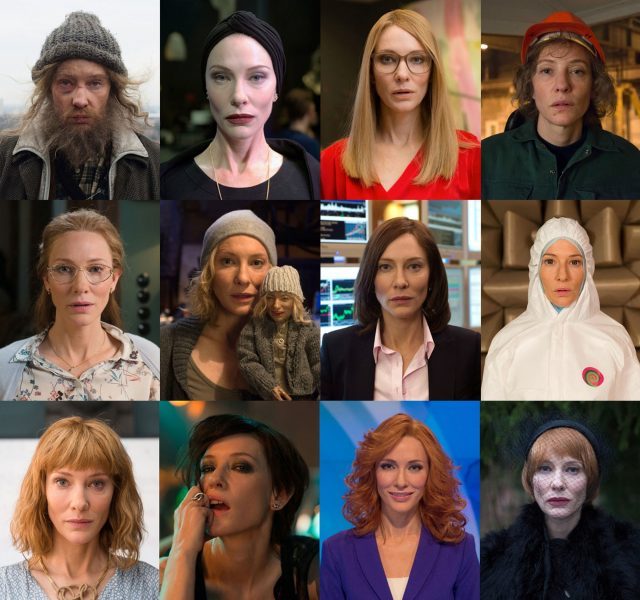
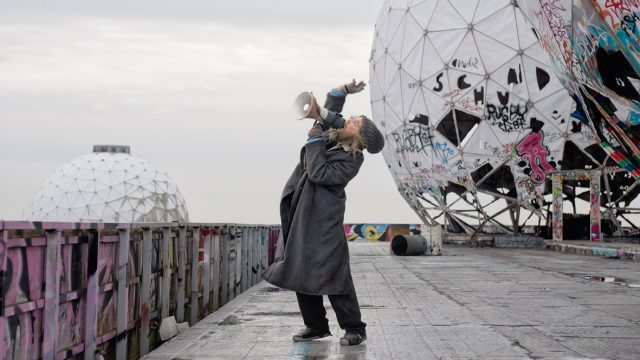
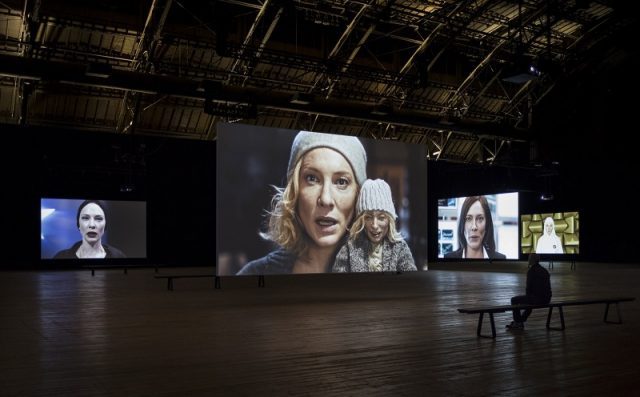
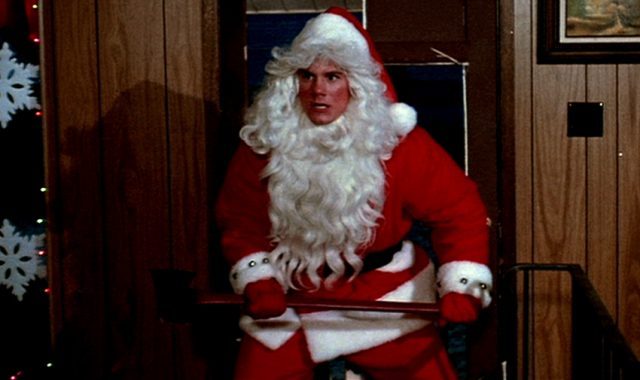
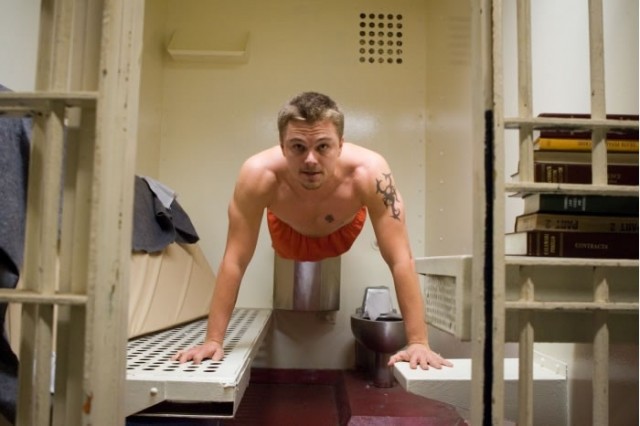
 Queens-born auteur Martin Scorsese changed the face of independent film in the 1970s with such hard-hitting dramas as Mean Streets, Alice Doesn’t Live Here Anymore, and Taxi Driver, then proceeded to expand the notion of cinema as art with such 1980s and 1990s pictures as The King of Comedy, Goodfellas, and After Hours. His more recent output, however, has been vastly overrated, as evidenced by the first part of the Queens-based Museum of the Moving Image retrospective “Martin Scorsese in the 21st Century,” being held December 16-30 in conjunction with the release of the director’s latest film, Silence, which stars Andrew Garfield, Adam Driver, and Liam Neeson. (The series accompanies the exhibition
Queens-born auteur Martin Scorsese changed the face of independent film in the 1970s with such hard-hitting dramas as Mean Streets, Alice Doesn’t Live Here Anymore, and Taxi Driver, then proceeded to expand the notion of cinema as art with such 1980s and 1990s pictures as The King of Comedy, Goodfellas, and After Hours. His more recent output, however, has been vastly overrated, as evidenced by the first part of the Queens-based Museum of the Moving Image retrospective “Martin Scorsese in the 21st Century,” being held December 16-30 in conjunction with the release of the director’s latest film, Silence, which stars Andrew Garfield, Adam Driver, and Liam Neeson. (The series accompanies the exhibition 



